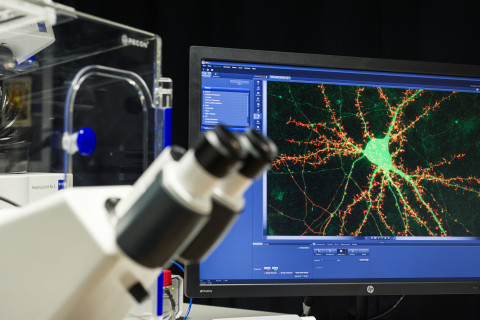- Terveys ja hyvinvointi
- Tapahtumapäivämäärä:
-
- Aika:
- 17:00–18:00
- Tapahtumapaikka:
-
Verkossa
- Lisätietoja:
-
Zoom
- Lisää kalenteriin:
Welcome to a webinar organised by TUBE and ADAIR projects together with University of Eastern Finland. The webinar will be arranged online via Zoom, and registration is not required.
Professor Lilian Calderón-Garciduenas, University of Montana and Universidad del Valle de México will give a talk on Cognition and brain MRI in seemingly healthy young adults exposed to PM2.5. – Role of developmental neurotoxicity. Where are we standing?
The Transport derived Ultrafines and the Brain Effects - TUBE-project has received funding from the European Union’s Horizon 2020 research and innovation programme under grant agreement No 814978.
The ADAIR project is an EU Joint Programme – Neurodegenerative Disease Research and funded under the 2019 JPCO-Fund call for Personalised Medicine under the grant number, JPND2019-466-037.
Lilian Calderón-Garcidueñas knew she wanted to be a physician by the time she finished middle school and she started medical school at age 15. Her pathology and neuropathology training at the University of Toronto were followed by her neuropathology fellowship at Harvard University, her Chief Pathology resident position at the University of Massachusetts at Worcester and her first position as an Assistant professor at Northwestern University in Chicago. She earned an American Board in Anatomical Pathology and Neuropathology in 1981. Her interest for clinical environmental research took her back to Chapel Hill, North Carolina where she earned a PhD in Toxicology in 2001,followed by three years as a postdoctoral fellow in Environmental Pathology. She is now affiliated as a professor at the Dept of Biomedical and Pharmaceutical Sciences at The University of Montana. Her interest in air pollution and clinical environmental research took her back to school at the University of North Carolina at Chapel Hill, where she earned a degree in Toxicology in 2001, followed by a PostDoc in Environmental Pathology at the UNC Gillings School of Global Public Health.
Professor Calderón-Garcidueñas is interested in the chronic effects of exposure to air pollutants both indoors and outdoors in clinically healthy children. A crucial aspect is the role of cytokine imbalance in the respiratory tract, and cardiovascular pathology and on systemic effects.
In her most recent work, her team has described the development of quadruple aberrant protein pathology in the brains of children and young adult residents in Metropolitan Mexico City. The quadruple pathology includes Alzheimer hyperphosphorylated tau and beta amyloid, Parkinson alpha-synuclein, while the TAR DNA-binding protein 43 is seen in motor and non-motor neuronal groups. Interestingly, 99.5% of the 204 forensic autopsies in MMC residents ≤40y old had the AD hallmarks, 23% PD and 18% TDP-43 pathology in subjects with no extra-neural pathology. She emphasizes there is a common denominator, and the question to pursue is: are solid nanoparticles at the core of the problem? The problem is a serious one, >55% of the MMC young adults are cognitively impaired and in a recent work she showed an association between PTSD and pRBD, strengthening the possibility of a connection with misfolded proteinopathies in young urbanites.
